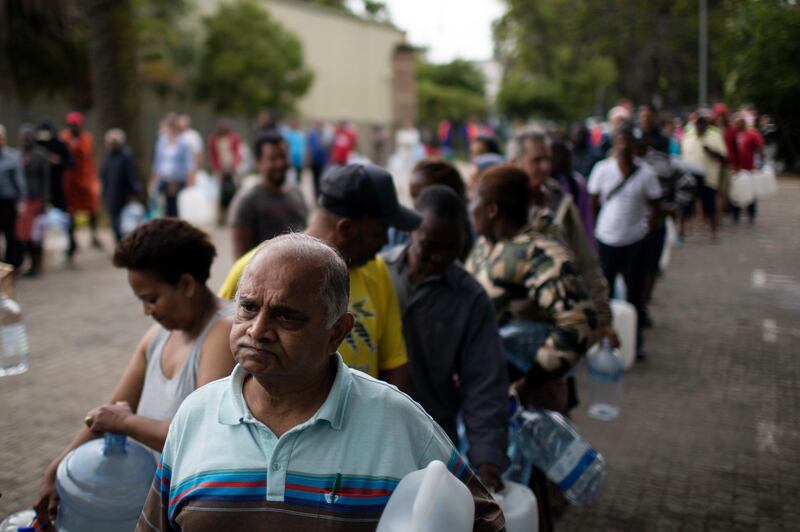The doomsday scenario of Cape Town's taps running dry has been averted this year, after its four million residents slashed their water consumption and supply was cut off to farmers, but the crisis confronting South Africa's second-biggest city is far from over.
The city’s six main dams are now on average just 21 per cent full, almost 2 percentage points less than they were a year ago. If winter rains disappoint and a three-year drought doesn’t break, the threat of so-called "Day Zero" – when the water taps will run dry – will loom large again by early 2019.
These are among the options being considered to address the water shortfall:
Drive demand down further
Higher tariffs, usage restrictions and a hard-hitting advertising campaign have already driven consumption down to 509 million litres a day, from 1.2 billion litres three years ago. That's still higher than the city's target of 450 million litres. Further price increases are in the offing, and the city intends installing more devices that restrict the water flow to households exceeding their daily quotas of 50 litres a person. While those measures may help curb demand, many households and businesses have limited scope to save more.
Build more desalination plants
Three temporary small-scale desalination plants that will produce a total of 16 million litres of water a day are nearly complete. While the city has so far steered clear of big plants because of high costs, environmental concerns and the risk that they won't be needed if there is adequate rainfall, it's now weighing whether to build a facility that could provide as much as 150 million litres of water a day from 2021. Another 20-million-litre plant that could be operational from 2020 is also being considered.
Recycle water
The city intends building a temporary sewage recycling plant that would yield 10 million litres of water a day from late this year and is mulling the construction of a permanent facility that could process as much as 90 million litres daily from 2020. The estimated cost of making waste water potable is about 7.50 South African rand per 1,000 litres – just over half the cost of effective desalination – because the plants use less electricity and wouldn't require extensive marine works, according to the city's Water Outlook 2018 report.
Use more ground water
About 12 million litres of water is being tapped daily from an underground aquifer and there are plans to drill into several others and increase the yield to as much as 150 million litres. It's cheaper and quicker to tap water from the ground than to purify or desalinate it and it's also the most environmentally friendly way of bolstering the supply provided extraction is kept to sustainable levels, according to the city.
Tow in icebergs from Antarctica
Salvage expert Nick Sloane has proposed using tugboats and a tanker to guide an iceberg more than 1,800km from the waters of the Antarctic to offshore Saldanha Bay, north of Cape Town, where it could be run aground and harvested. A single iceberg could provide about 130 million litres of water daily for a year and the cost of moving it would be about half of that of desalination, he says. The city has said it won't consider the proposal because it is too risky and expensive, according to News24, a Cape Town-based website.





